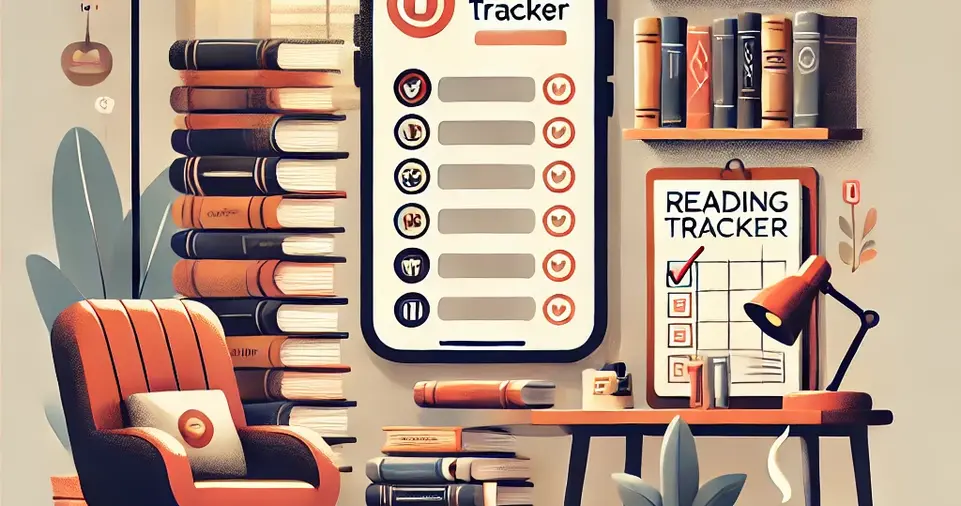In today’s fast-paced world, multitasking has become the norm, even in leisure activities like reading.
The idea of juggling multiple books may seem intimidating, but for avid readers, it offers a unique way to explore diverse topics, genres, and ideas simultaneously.
Whether you’re a curious learner delving into various subjects or a book enthusiast who simply can’t resist starting another novel, reading multiple books at once can be incredibly rewarding.
However, without the right strategies, it can also lead to confusion, overwhelm, and a stack of unfinished books.
This guide will walk you through the best practices for reading multiple books at once, helping you balance your reading list, stay organized, and truly enjoy the process.
From selecting the right mix of books to using tools that keep your progress in check, you’ll learn how to approach this practice with confidence.
Whether you’re looking to sharpen your intellect, satisfy your curiosity, or simply diversify your reading habits, these tips will ensure you do so without feeling overwhelmed.
Why Read Multiple Books at Once?
Reading multiple books at a time might sound counterproductive, but it offers several benefits:
- Variety Keeps Things Fresh: Switching between genres or topics prevents boredom and keeps your mind engaged.
- Cater to Different Moods: Some days call for lighthearted fiction, while others demand thought-provoking non-fiction.
- Faster Learning: If you’re studying different subjects, reading several books concurrently can help you absorb diverse information efficiently.
By embracing this approach, you can align your reading habits with your lifestyle, schedule, and interests, making the entire experience more enjoyable.
Choose Books with Distinct Themes or Genres
One of the most important aspects of reading multiple books at once is ensuring that they don’t overlap too much in content or style.
For example, if you’re reading two mystery novels with complex plots, you might mix up the characters or storylines. Instead, opt for books that vary in theme, tone, and subject matter.
- Example Combination: A fantasy novel, a self-help guide, and a historical biography.
- Why It Works: Each book taps into a different part of your mind, reducing mental fatigue and keeping you engaged.
Diversifying your reading list also allows you to enjoy a mix of entertainment, education, and inspiration.
You’ll be more likely to finish each book because they serve different purposes in your day-to-day life.
Set Clear Intentions for Each Book

Understanding why you’re reading a particular book helps you prioritize and stay focused.
Ask yourself these questions before diving into a new book:
- What do I hope to gain from this book?
- Is this for entertainment, knowledge, or personal growth?
- How does it fit into my current interests or goals?
When you assign a clear purpose to each book, you’re less likely to abandon it halfway.
For instance, a motivational book can provide morning inspiration, while a gripping novel can be your companion during evening downtime. This structured approach minimizes the feeling of being overwhelmed.
ALSO READ: How to Keep Track of the Books You Read
Assign Specific Times or Moods to Each Book
Time and mood play a significant role in reading multiple books effectively.
Matching the book to your energy levels or daily routine ensures you engage with the content in the best possible way.
- Morning Reads: Start your day with non-fiction or self-improvement books that inspire productivity and positive thinking.
- Afternoon or Breaktime: Opt for light, easy-to-read content like short stories or casual fiction.
- Evening Wind-Down: Choose calming or immersive genres like fantasy or historical fiction to relax before bed.
By syncing your reading habits with your daily rhythm, you’ll not only enjoy the process more but also retain information better.
Use Different Formats for Convenience
One of the best ways to manage multiple books is by using different formats. This approach adds flexibility to your reading habits and allows you to fit more reading into your schedule.
- Audiobooks: Perfect for commutes, workouts, or household chores.
- eBooks: Great for reading on-the-go since you can access them on your phone or tablet.
- Physical Books: Ideal for deep, focused reading sessions at home.
Using multiple formats also helps distinguish between books, reducing the chance of mixing up storylines or ideas.
For example, you might listen to a business book while driving and reserve a gripping thriller for your bedtime ritual.
Track Your Progress with Tools

Keeping track of your reading progress is crucial when juggling multiple books. Without a system, it’s easy to lose track of where you left off or forget key details.
Here are some effective ways to stay organized:
- Use a Notebook: Jot down quick summaries or key points after each reading session.
- Apps and Platforms: Apps like Goodreads or Notion can help you track progress, set goals, and maintain a structured reading list.
- Bookmarks and Annotations: Use physical bookmarks or highlight sections in eBooks to mark important passages.
Tracking your reading not only keeps you on top of your books but also boosts your motivation as you see your progress grow.
Rotate Between Books Strategically
If you’re reading multiple books, it’s important to rotate between them in a way that doesn’t disrupt your flow.
Here’s how:
- Set Reading Goals: Decide how many chapters or pages you’ll read from each book per week.
- Create a Schedule: Allocate specific days or times for each book. For example, dedicate Mondays and Wednesdays to one book and the rest of the week to another.
- Listen to Your Mood: If a book feels heavy, switch to something lighter without guilt.
Strategic rotation helps maintain variety and ensures that you’re making steady progress in all your books.
Limit the Number of Books You Read Simultaneously
While reading multiple books is rewarding, there’s a limit to how many you can manage at once.
A good rule of thumb is to stick to 2–4 books at a time. This keeps your reading list manageable and prevents burnout.
If you find yourself struggling to keep up, pause one or more books and focus on completing one before resuming the others.
Remember, the goal is quality over quantity—reading should be enjoyable, not stressful.
Give Yourself Permission to Pause or Abandon a Book
Not every book will resonate with you, and that’s okay. If a book isn’t holding your interest or adding value, it’s better to set it aside than force yourself to finish it.
You can always come back to it later or replace it with something more engaging.
Pausing or abandoning a book doesn’t mean failure; it’s a way of prioritizing your time and energy for books that truly matter to you.
Final Thoughts: Enjoy the Journey
Reading multiple books at once is a skill that takes practice and patience.
By choosing diverse genres, setting clear goals, and staying organized, you can make the experience enjoyable and productive. The key is to approach it with flexibility and a sense of curiosity.
Remember, reading is a journey, not a race. Whether you’re savoring a gripping novel or gaining insights from a self-help guide, each book adds value to your life.
So, pick up those books and dive in—you’ve got this!

